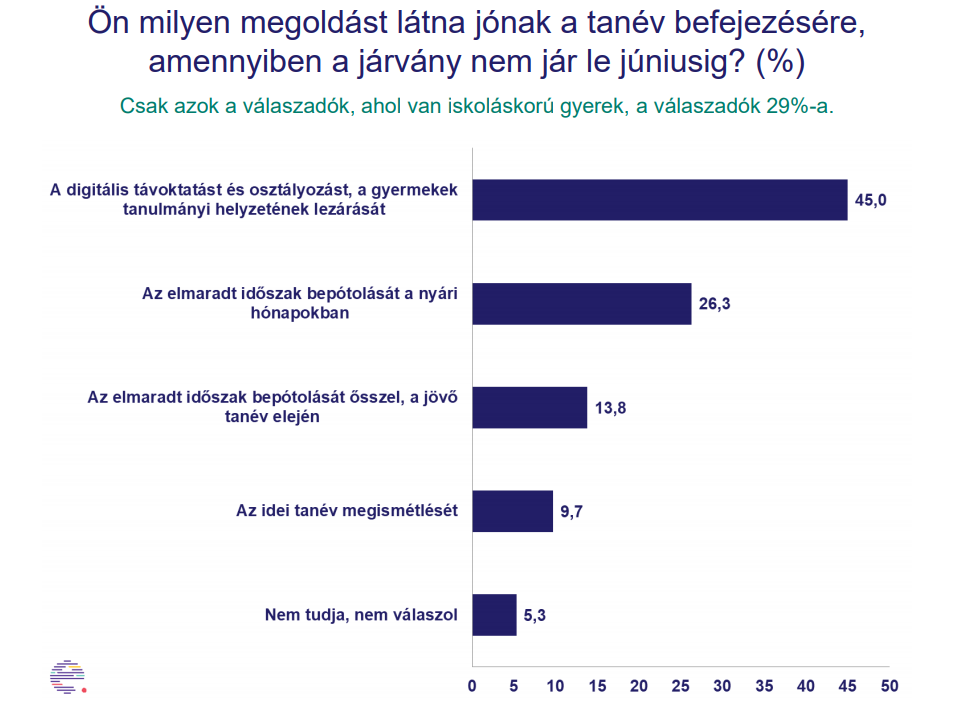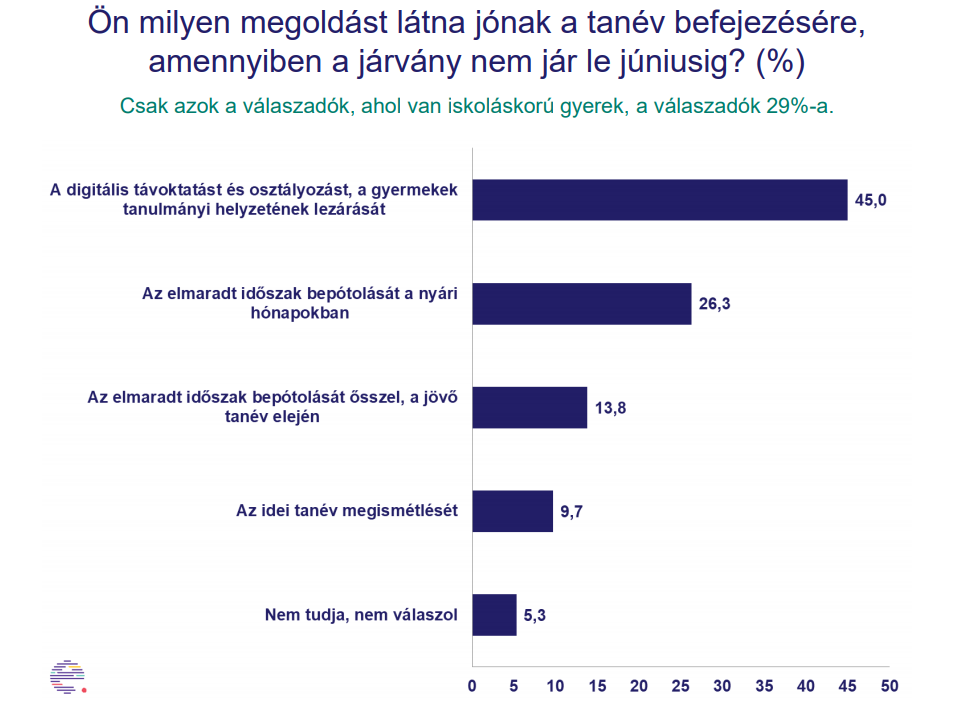Interactive digital teaching methods are available to less than half of Hungarian students in Transylvania, and those living in rural areas and children of parents with a low level of education have significantly lower access to digital education, the Coronavirus in Transylvania survey shows. The study was conducted voluntarily by the Közpolitikai Elemző Központ Egyesület (Association of the Public Policy Analysis Center), which manages Erdélystat, a statistical website on Transylvania, and by the SoDiSo Research polling group. The survey was conducted in the beginning of April, when the Ministry of Education had only recommended online education; but distance learning then became mandatory in the middle of the month.
The study focused on five major problems. The first, second, third and fourth parts of the results, regarding people’s general health and attitudes, issues with social distancing and movement restrictions, economic and social challenges, and changes in the labor market are already available on TransylvaniaNOW. In this fifth part, we present the results focusing on online education.
According to the latest results, published on Erdélystat.ro on Monday, the majority of parents said that their (youngest) school-aged children are participating in distance learning. Only 9 percent mentioned that the school did not provide a solution for online education.
The study stresses: While the majority of the students are participating in distance learning, the methods of online teaching are by no means uniform. The most common method is where teachers send exercises and lessons by e-mail, social media or SMS. This manner of distance learning applies to 59 percent of the students and is overrepresented among elementary school students (grades 0-4). But the question arises: In these situations, is there any personal contact between the teacher and the student, or does all communication, consultation, feedback and evaluation go through the parents?
At least one form of education that can be considered a truly digital one (Google Classroom, Microsoft Teams, Edmodo, Meet, Zoom, etc.) is available to 45 percent of the students: 31 percent use digital education platforms, and 22 percent learn through online video conferencing. The proportion of students using both digital solutions is 8 percent.

But the provision of and access to different forms of digital education shows significant social inequities. Children of parents with a high level of education living in bigger cities are in the best position, with half of them participating in digital distance learning. It is common in this group that the school uses several forms of education: Homework is sent using traditional electronic communication and digital educational platforms, while they also hold online classes. In rural areas and for children of parents with a low level of education, students have significantly lower access to digital education; it is very likely that the possibilities for both the schools and parents are limited.
By grade, in elementary school, the use of interactive forms of education is very low, while digital distance learning is outstanding among high school students. More than 70 percent of graduating students learn using video conferencing and professional platforms.
Students currently spend an average of 3.1 hours per day studying (including distance learning and time spent with homework). Those graduating spend the most time (3.8 hours per day), followed by middle school students (3.2 hours per day). Elementary school students are last on this list, studying 2.8 hours per day.
According to the study, it is difficult to adapt to the new learning methods for one-fifth of the parents. When asked about the three main issues they face, 21 percent of parents with school-aged children said that it is problematic for them to adapt to the new methods of education. The results show that various factors influence this. This new situation is the most problematic for graduating students, while it causes above-average difficulties for families with multiple children, mothers who are likely to be more involved in the education of their children, and respondents with a high level of education. By region, this problem was overrepresented among respondents living in Szeklerland.

If the pandemic does not end by June, 45 percent of parents said they would prefer to end this school year using distance learning. On the other hand, 40 percent of parents would like to make up missed classes via traditional, in-school learning, and one-tenth of parents think this school year should be repeated.
Title image: This new form of education is the most problematic for graduating students. Photo: Egészségkalauz.ro